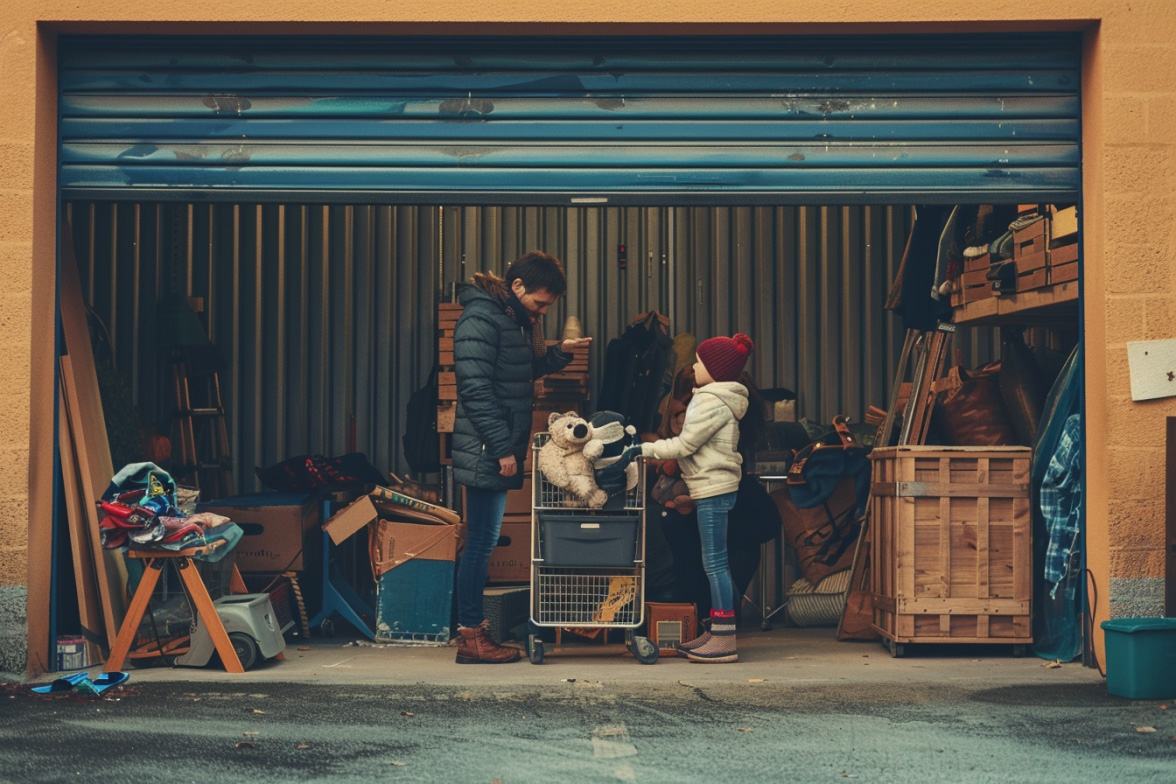How to Make the Most of a Small Storage Unit

A small storage unit might not seem like much at first glance, but with the right approach, you can fit way more inside than you think. Whether you are using it for a house move, storing hobby gear, keeping seasonal stuff out of the way or just clearing out clutter, maximising space in your small storage unit is all about planning.
The key is to treat your storage unit like a real-life game of Tetris. Pack smart, stack right, and use every bit of space from floor to ceiling. Here is how to make the most of a small storage unit without it turning into a pile of chaos.
Start by sorting everything first
Before you even get to your storage unit, take the time to go through what you are planning to store. Most people bring way more than they need because they have not taken a proper look beforehand.
If something is broken, expired, or you have not used it in years, ask yourself if it really needs to go into storage. The less clutter you take in, the more space you will have for the things that matter.
Once you have sorted everything, group your items by type. Keep boxes of kitchen stuff together, tools in another group, and so on. This will help later when you are stacking and want to keep things easy to find.
Use boxes that stack neatly
It is tempting to grab whatever boxes you have lying around, but using a mix of shapes and sizes makes stacking harder and wastes space. Aim for sturdy, same-sized boxes where possible. Plastic containers with lids are a good option because they stack evenly and protect your stuff better over time.
Fill each box fully so it does not collapse if something is placed on top, but avoid making them too heavy. You want to be able to lift and move them without a struggle.
Label each box clearly on more than one side. That way, you can see what is inside even if the boxes are stacked or facing different directions.
Think upwards, not just outwards
A small storage unit often has more vertical space than you realise. Using the full height of your unit is one of the easiest ways to fit more in. If you can, bring in a small set of shelves or stackable crates to build upwards rather than spreading things across the floor.
Put your heaviest and sturdiest items at the bottom to create a strong base. From there, you can build up with lighter boxes or soft items like duvets, clothes or cushions. Always leave some space at the top in case you need to get something out later.
Disassemble furniture to save space
Big furniture eats up space fast. If you are storing beds, desks, or tables, take them apart first. Flat pieces like headboards, slats, and table legs are much easier to store upright and out of the way than fully assembled furniture.
Keep screws, bolts and instructions in a bag taped to the item or placed in a clearly marked box. You will thank yourself later when it is time to put everything back together.
Use furniture with storage inside it
If you are storing a chest of drawers, filing cabinet or storage ottoman, do not waste that internal space. Fill drawers and compartments with smaller items like cables, linens, books or kitchen gear. Just make sure to pad anything breakable so it does not rattle around or get damaged in transit.
You can also use suitcases, toolboxes, and even bins as hidden storage spaces inside the unit.
Create a path you can actually walk through
One of the most common mistakes people make is packing the unit so tightly that they cannot reach anything without taking half of it out first. To avoid this, leave a narrow path down the middle or along one side. It might seem like lost space at first, but it makes everything else easier to access, especially if you are using the unit for more than a month or two.
If you know you will be coming back for specific items, store them near the front. Think of it like packing a suitcase. You want your essentials on top and your longer-term stuff at the bottom.
Keep an inventory and take photos
It might not seem like a big deal at first, but after a few months, you will forget what you packed and where you put it. A quick list or set of photos showing what is in each box and where it is in the unit can save hours of digging later on.
This is also handy if someone else needs to access the unit for you while you are away, or if you are claiming on insurance for anything inside.
Protect your stuff from the environment
Even small storage units need to be packed with protection in mind. Use dust covers or old sheets to protect furniture. Keep fabric items in sealed bags and avoid placing anything directly on the ground if there is a risk of damp.
If you are storing electronics or items that could be damaged by moisture, add a few moisture absorber packs to your boxes just in case. A little prep now saves a lot of damage later.
Use a unit with good access and security
Finally, picking the right small storage unit can make a big difference. Look for one with good lighting, solid locks and 24 hour CCTV. If you plan to visit often or access your stuff late at night, choose a unit with extended access hours.
If you are storing anything valuable or irreplaceable, check that your unit includes insurance or consider adding your own.
